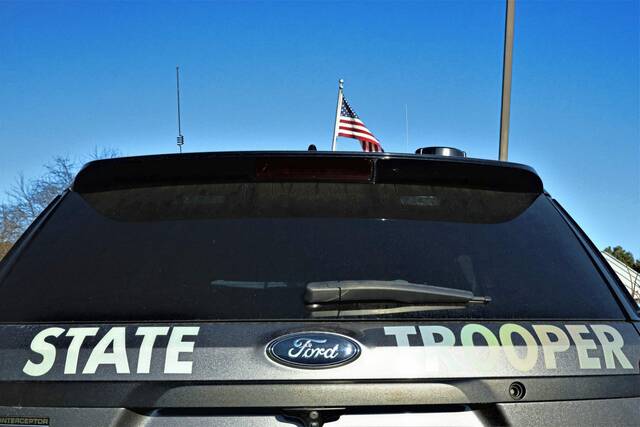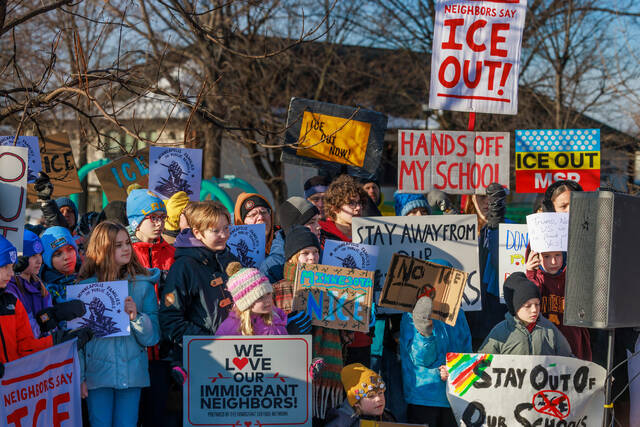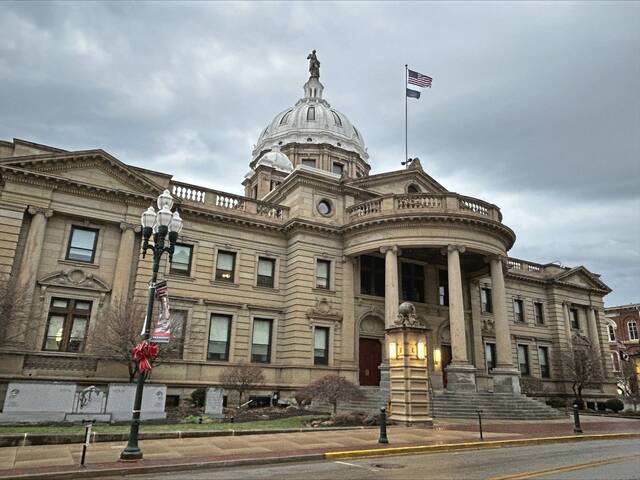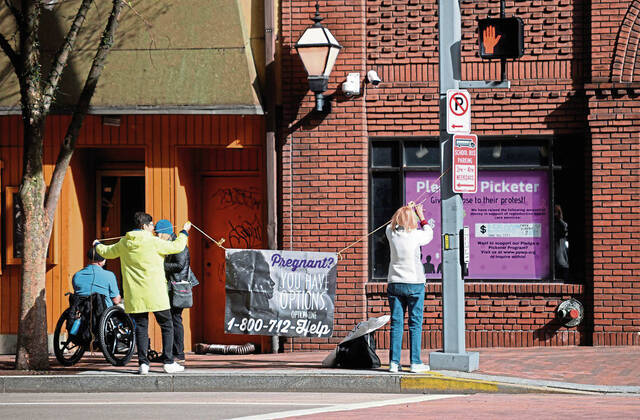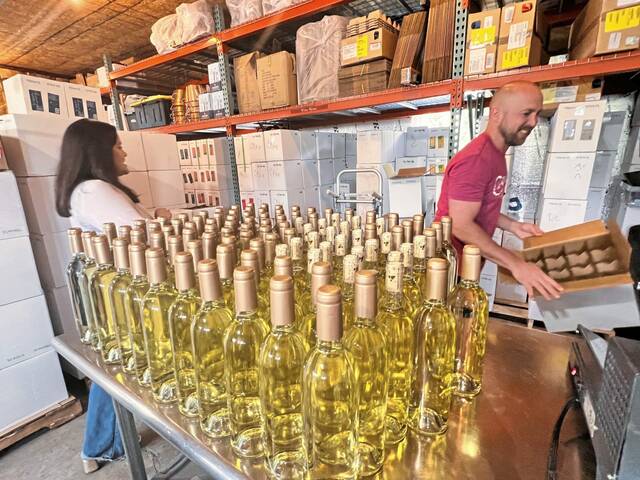While the end of a tumultuous first semester is in sight, school districts plagued with uncertainty and ever-changing situations brought on by the coronavirus pandemic are far from in the clear as record-breaking cases are continually reported, leaving no set plans going into the spring months.
As the first semester progressed into the holiday season, community transmission rates skyrocketed, forcing administrators to revert to online learning going into the winter, upending plans to return to classrooms in person as countless students and teachers were forced to quarantine and many schools were left without adequate staffing.
“As people in the community got more and more fatigued with covid precautions and started taking more chances with it, you see the spike going up, and so now that’s affecting our schools,” said Mark DiRocco, executive director of the Pennsylvania Association of School Administrators.
Districts again face an uncertain future as they head back after the winter break, with several returning to either hybrid or remote models of learning for the first few weeks of January. When the semester officially ends in mid-January, district leaders will take the opportunity to reexamine covid-19 data and to make a decision on how to move forward.
Several factors, most of which change daily, will play into those decisions, including the long-awaited vaccine, for which a distribution timeline remains unclear.
“You want to have a plan and you want to be able to have a good idea of where you’re going, but it’s almost week-to-week at this point,” said Jon Banko, acting superintendent at New Kensington-Arnold School District.
Vaccine potential
Banko noted covid numbers have remained low in his district, with seven staffers and five students having tested positive since school started in the fall. He said administrators have not yet discussed what a vaccine roll out would look like at the district because of a lack of details from health officials on when staffers could be innoculated.
According to DiRocco, if early vaccine distributions do not include teachers and school staff, districts could see a semester similar to last spring when students were forced into online learning as covid-19 spread across the region.
“I think most districts are hoping that the vaccine can be widely distributed by at least late spring and then try to get back to some sense of normalcy to finish out the school year,” DiRocco said.
But even if a vaccine is extended to district staffers it might not have a large impact on schools reopening because it will not be known how the vaccine will impact community spread until the majority of adults are vaccinated, said Dr. William Keough, a Pittsburgh-based member of the Pennsylvania chapter of the American Academy of Pediatrics.
Testing of both the Pfizer and Moderna vaccines, which received emergency approval this month, have focused on how many vaccinated people become sick with covid-19, meaning there is a possibility that some who received one could still become infected with no symptoms, possibly silently spreading the virus, The New York Times reported.
A multi-phase vaccine distribution plan released by the Pennsylvania Department of Health does not give a timeline for when the majority of adults could be vaccinated.
It does, however, list teachers and school staffers who work directly with students in the second half of the first phase, which began this month with health care workers and those living in nursing homes.
Another problem for schools, according to Keough, is that research testing of the virus on anyone younger than 18 has been limited, meaning staffers would likely be the only ones vaccinated. Data on the safety and how effective the vaccine is for that for that age group will not be known for several months.
“It’s probably going to be a good year before we have all the data,” Keough said.
Covid in schools
As things stand, several districts have reported hundreds of covid-19 cases among students and staff since September.
Greater Latrobe School District saw 103 total cases this fall, six of which were active when an online tracker was last updated Dec. 23. A high school secretary died from a covid-related illness. Superintendent Georgia Teppert declined to say if that death played a role in decisions moving forward.
At the beginning of the year, elementary students returned to in-person classes five days a week while secondary students followed a hybrid model. After about two weeks, all students were brought back to in-person classes five days a week. Students moved to remote learning after Thanksgiving as case numbers increased.
Remote learning will continue until Jan. 18, at least. Administrators will meet Jan. 15 to determine how students might return.
“We were successful in bringing students back this fall and having a full nine weeks in brick and mortar,” said Teppert, noting that administrators made the right decision in bringing students back.
“Another thing it did, it gave teachers time to make those connections and develop relationships with their students.”
Districts over the summer created plans that became a mix of in-person, remote and hybrid models of learning that continually changed this fall as districts tried to pick the safest option for students.
Norwin School District was one that struggled to bring students back full-time, with officials continually pushing back possible return dates. After remaining in a hybrid model for most of the year, with individual schools closing as cases were reported, students are now learning remotely until Jan. 11.
An online covid-19 tracker shows 207 cases have been reported this school year at the district, one of which was active as of Dec. 30.
“Unfortunately, in this pandemic, there are no ‘good’ decisions — only ones with varying degrees of advantages and disadvantages,” said district spokesman Jonathan Szish.
Pittsburgh Public Schools was in a similar situation in trying to bring students back to in-person learning five days a week. The district returned to classrooms for a few days, but quickly moved back to remote learning as cases rose. A total number of covid-19 cases was not provided, and district officials were not made available for comment.
Mt. Lebanon School District also has seen a high number of cases so far this academic year, with 99 total — four of which was active as of Dec. 30.
District students began the year learning remotely and moved to a hybrid model in October, according to spokeswoman Cissy Bowman. Students moved back to remote learning before Thanksgiving. Elementary students will return to a hybrid model Jan. 11, although parents have the option to move them fully remote.
“I think that this is a difficult decision to make because there’s not 100% on either side,” Bowman said. “You have parents that want to stay fully remote, (and) there’s some parents that want to be back at school five days. It’s a really difficult and emotional decision to make. I would say we’re doing the best we (can).”
Contact tracing
As positive cases were reported in districts across the region, the state Department of Health conducted contact tracing to identify how the infected person became sick, as well as anybody who came in close contact with them. Those identified as close contacts were required to quarantine.
As the contact tracing process was completed, several districts reported cases contracted by students and staff often came from outside events or family members.
“What we do know, even in the teens, is that most of their acquisition of the virus has been … out in the community and not necessarily at school,” Keough said. “But that doesn’t mean they can’t bring it into the school and spread it around school.”
Neither Keough or DiRocco ruled out the possibility that schools could become superspeader locations, but both stressed a link between spread in the community and spread in schools.
“Children spend most of their time during the day away from the school, even if they’re doing in-person learning, so we can’t expect the school to control what’s going on the community,” Keough said.
Schools have worked to limit spread by installing plexiglass and enforcing mask wearing and social distancing measures. A problem comes in when districts have several students and staff quarantined, meaning they are learning and teaching virtually.
The Jeannette School District had 30 students and staff quarantining as of Dec. 30. Superintendent Matthew Jones said the district has found cases have come from both outside events and within schools. The district also reported the covid-related death of an elementary school secretary.
“We can identify some of the contact tracing — so direct contact, not positives to positives, but students that needed to be quarantined — they were a result of being here in school,” Jones said. “On the flip side, I can tell you that the staff that have been affected, most of them have been directly impacted by events or family outside of school.”
Still, officials with Latrobe, Mt. Lebanon and Norwin have said contact tracing showed cases came mostly from outside sources. Norwin reported a large number of student and staff quarantines throughout the year, with 1,038 quarantines already completed and another 215 were still in the process as of Dec. 18.
“More and more districts are having difficulty keeping their buildings open because they’re losing staff and they’re losing kids,” DiRocco said of quarantines. “Consequently, especially the staffing issue has probably caused as many building closures as the covid itself has. … Unfortunately, I think this thing is going to get a little worse before it gets better.”
Uncertain future
In the weeks leading up to Christmas, covid cases across the state skyrocketed, with Westmoreland County reporting an incidence rate five times higher than the “substantial” threshold, meaning cases have tripled in the last month.
State health officials earlier this year designated the “substantial” threshold as 100 cases per 100,000 people. In Westmoreland, that incidence rate is currently 421.0. Allegheny County’s incidence rate is currently 327.1. It is unclear if case numbers will continue to rise after Christmas as they did following Thanksgiving.
Several school districts have left a buffer of time between the New Year and when they will decide how students will return in the second semester. With several school boards and parents hoping to have students return to a more normal schedule, DiRocco said there is rationale for reopening five days a week.
“I think they can if they speak to their local medical professionals and if they feel they have the protocols in place to keep the building clean, keeping the kids socially distanced, making sure everyone’s wearing a mask, then I think there is enough rationale to keep the buildings open, especially for the younger kids,” DiRocco said.
While there are no set plans moving forward, both Teppert with Latrobe and Szish with Norwin said the goal is to ultimately bring students back five days a week when it is safe.
“Our goal is to find a way to resume in-person learning five days per week as soon as it is safe to do so, and we have not given up on that goal,” Szish said. “We know that having children physically back in school is the best possible learning environment for them.”
Regardless of how students return in the spring, one thing holds true for the foreseeable future.
“This is going to be a rough winter for everyone,” Keough said.



